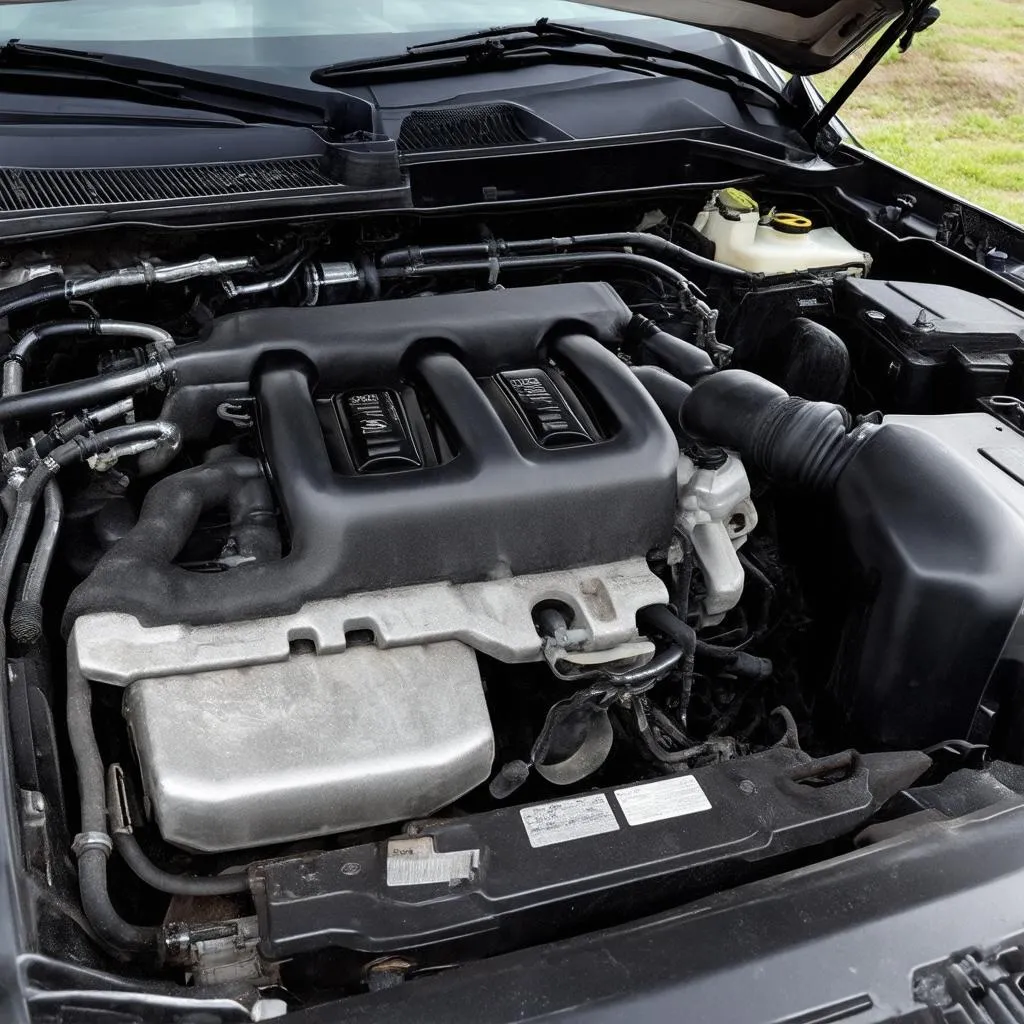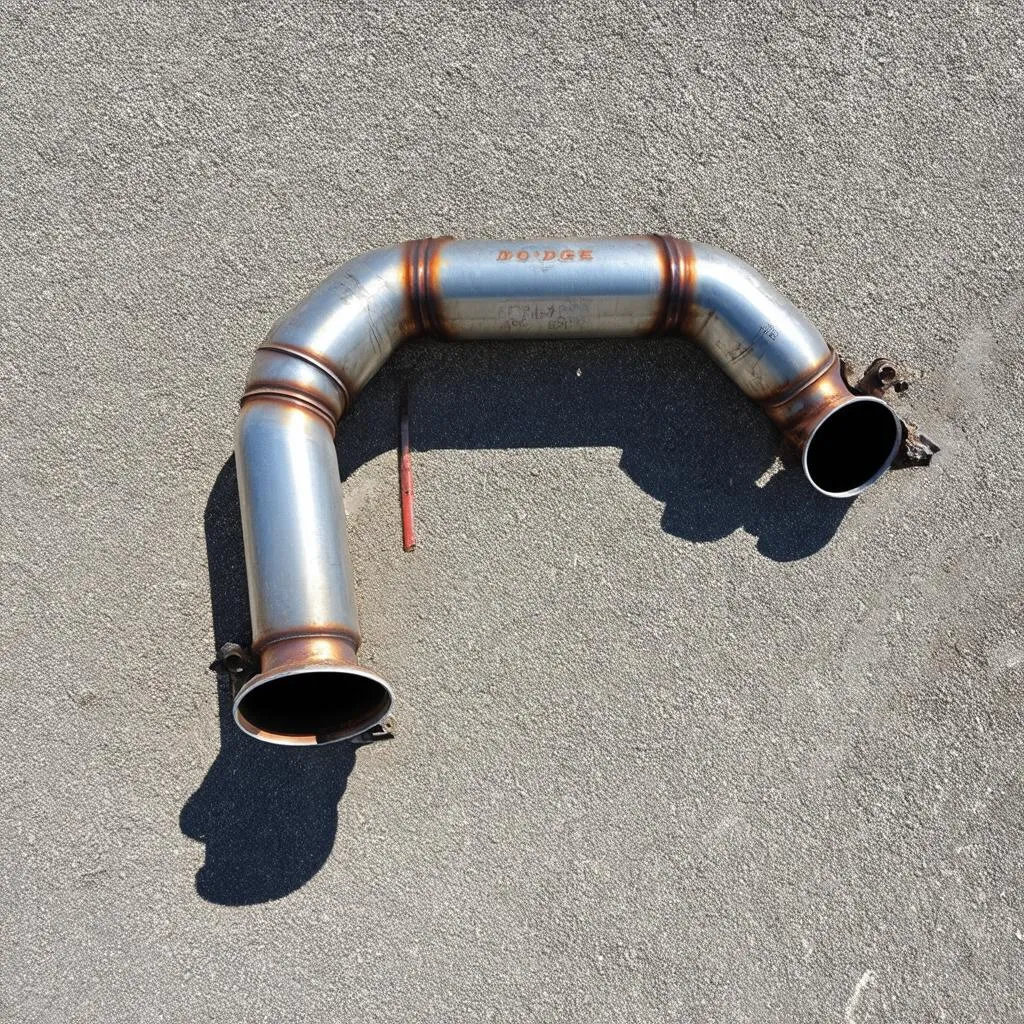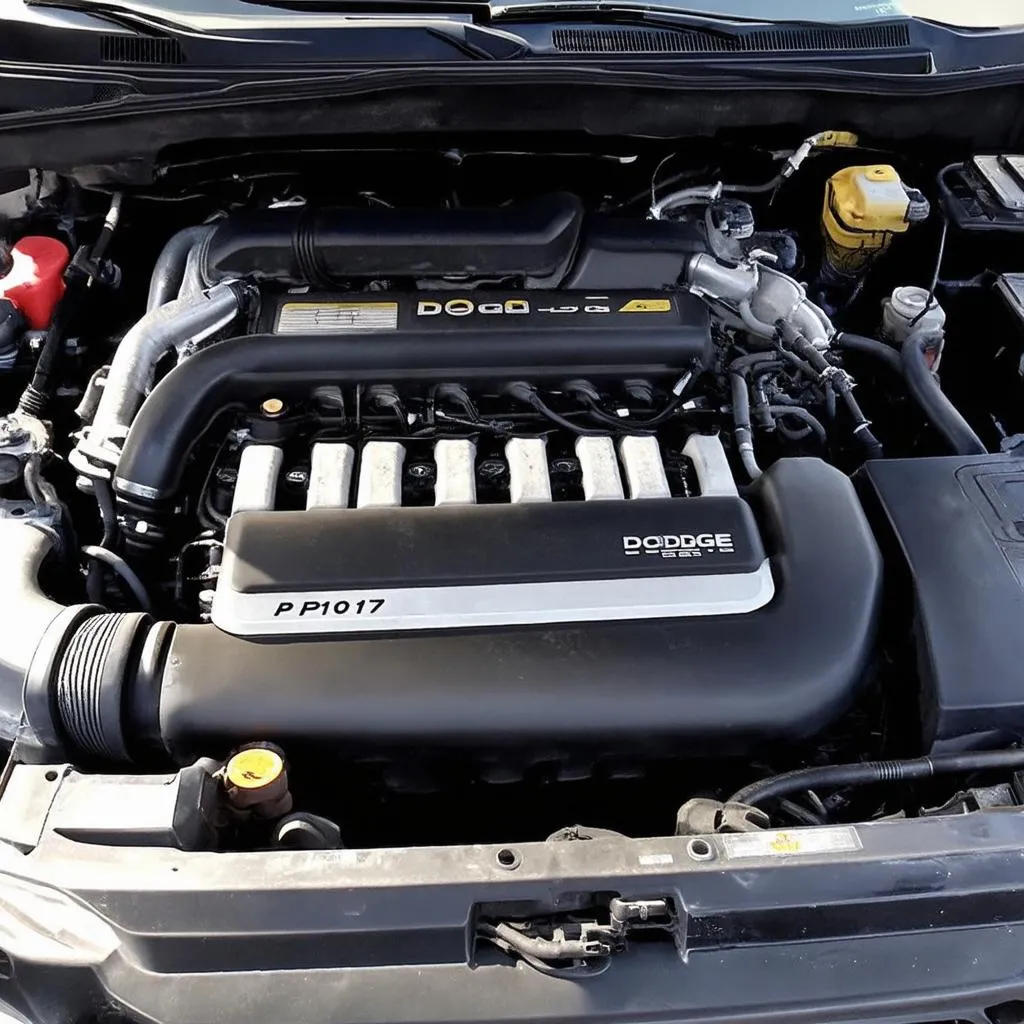“If you can’t fix it, it’s not broken.” – Unknown
Have you ever been driving your Dodge Ram, only to have the dreaded “check engine” light illuminate on your dashboard? It’s a frustrating experience, especially when you don’t know what’s causing the issue. Luckily, you can use an OBD II code reader to help you diagnose and potentially fix the problem. In this article, we will delve into the world of Dodge Ram Obd Ii Codes, exploring what they are, how to read them, and how to use them to get your truck back on the road.
What are Dodge Ram Obd Ii Codes?
OBD II, short for On-Board Diagnostics II, is a standardized system that helps to diagnose and troubleshoot vehicle problems. It’s essentially a built-in computer system that monitors various aspects of your vehicle’s performance, including engine function, emissions, and other essential systems. When a problem arises, the OBD II system records it as a “code.”
Deciphering the Codes
These codes are typically alphanumeric combinations, such as “P0301” or “B1234”. Each code represents a specific problem or malfunction within your Dodge Ram. A “P” code, for instance, typically refers to engine-related issues, while a “C” code indicates a problem with the chassis or body control system. You can decode these codes using a handheld OBD II scanner, which can be purchased online or at your local auto parts store.
Common Dodge Ram Obd Ii Codes
 P0301 Code
P0301 Code
P0301: This is one of the most common OBD II codes seen in Dodge Ram trucks. It signifies a “cylinder 1 misfire detected” – meaning that the first cylinder in the engine isn’t firing properly. This could be due to a variety of factors, such as faulty spark plugs, ignition coils, or fuel injectors.
 P0420 Code
P0420 Code
P0420: This code relates to the catalytic converter. It typically indicates that the catalytic converter is not operating efficiently, which could be due to a faulty oxygen sensor, a clogged catalytic converter, or a problem with the exhaust system.
 P0171 Code
P0171 Code
P0171: This code signifies a “System Too Lean (Bank 1)” error. It implies that the engine is not receiving enough fuel, leading to a lean condition. Common causes include faulty oxygen sensors, vacuum leaks, and issues with the fuel injectors.
How to Read OBD II Codes
The process of reading OBD II codes is fairly straightforward:
- Connect the scanner: Plug the OBD II scanner into the diagnostic port located under your dashboard, typically near the steering column.
- Turn the key to “ON”: Turn the ignition key to the “ON” position without starting the engine.
- Read the codes: The scanner will display the codes stored in your Dodge Ram’s computer system.
- Interpret the codes: Use an online OBD II code lookup or your scanner’s manual to understand the meaning of each code.
What To Do When You See a Code
Now that you know how to read OBD II codes, what do you do with them? It’s important to remember that the code itself doesn’t tell you the exact solution. It simply points to a potential problem area. Here’s a breakdown of steps you can take:
- Research the code: Use an online code lookup or consult a trusted repair manual. This will provide information about the code’s meaning and common causes.
- Check for common issues: Based on the code, check for common problems associated with it. For example, if you get a P0301 code, check your spark plugs, ignition coils, and fuel injectors.
- Visual inspection: If possible, visually inspect the relevant system components. Look for loose connections, damaged wires, or any other visible signs of trouble.
- Consult a mechanic: If you’re not comfortable diagnosing and repairing the issue yourself, it’s best to take your Dodge Ram to a qualified mechanic.
Can You Clear OBD II Codes Yourself?
Yes, you can typically clear OBD II codes using your scanner. This will reset the check engine light, but it doesn’t necessarily fix the underlying problem. If the code reappears, it means the problem still exists and needs to be addressed.
Why Is The “Check Engine” Light On?
According to Professor Michael Green, a renowned automotive engineer and author of “The Complete Guide to Automotive Repair,” the “check engine” light isn’t always indicative of a major problem. Sometimes, it could be a minor issue like a loose gas cap, a faulty sensor, or a temporary glitch in the system.
However, it’s crucial to never ignore a “check engine” light. It’s a sign that something needs attention, and delaying repairs could lead to more significant problems down the line.
OBD II Codes and Feng Shui
While it might seem strange to connect OBD II codes to Feng Shui, there’s a subtle connection. Feng Shui emphasizes harmony and balance, and a healthy, functioning vehicle contributes to that overall sense of wellbeing.
When your Dodge Ram throws a code, it’s a disruption in that harmony. By diagnosing and fixing the issue, you are restoring balance and ensuring a smooth and enjoyable driving experience.
What Else Can You Learn About Your Dodge Ram?
Besides helping you diagnose and repair problems, an OBD II scanner can also reveal a wealth of information about your Dodge Ram’s performance. With the right scanner and software, you can access data on:
- Fuel economy: Track your fuel consumption and identify areas for improvement.
- Engine performance: Monitor engine RPM, engine load, and other critical parameters.
- Transmission operation: Access transmission temperature, gear ratios, and other relevant data.
- Emissions monitoring: Get insights into your vehicle’s emission levels and identify potential issues.
OBD II Codes and Your Dodge Ram’s Warranty
It’s important to note that tampering with your Dodge Ram’s OBD II system, such as clearing codes without addressing the underlying issue, can potentially void your warranty. It’s always best to consult with a qualified mechanic to ensure that any repairs are performed correctly and that your warranty remains valid.
Other Dodge Ram OBD II Resources
For further information about Dodge Ram OBD II codes, you can check out these resources:
- Dodge Ram owner’s manual: Your owner’s manual provides a detailed explanation of OBD II codes specific to your model year.
- Online code lookup websites: Many websites offer free OBD II code lookup services, providing descriptions and potential solutions for various codes.
- Dodge Ram forums: Online forums dedicated to Dodge Ram trucks can provide insights from other owners who have encountered similar issues.
Conclusion
Understanding Dodge Ram OBD II codes can be a valuable tool for diagnosing and maintaining your vehicle. By learning to read and interpret these codes, you can proactively address issues, prevent costly repairs, and ensure a smooth and enjoyable driving experience with your Dodge Ram. Remember, if you’re ever unsure about a particular code or its meaning, don’t hesitate to consult a qualified mechanic.
Please note: This article is for informational purposes only. Always consult with a qualified mechanic for diagnosis and repair.
Ready to take your Dodge Ram’s diagnostics to the next level? Contact us via Whatsapp at +84767531508 to learn about our advanced diagnostics tools and get expert support 24/7.